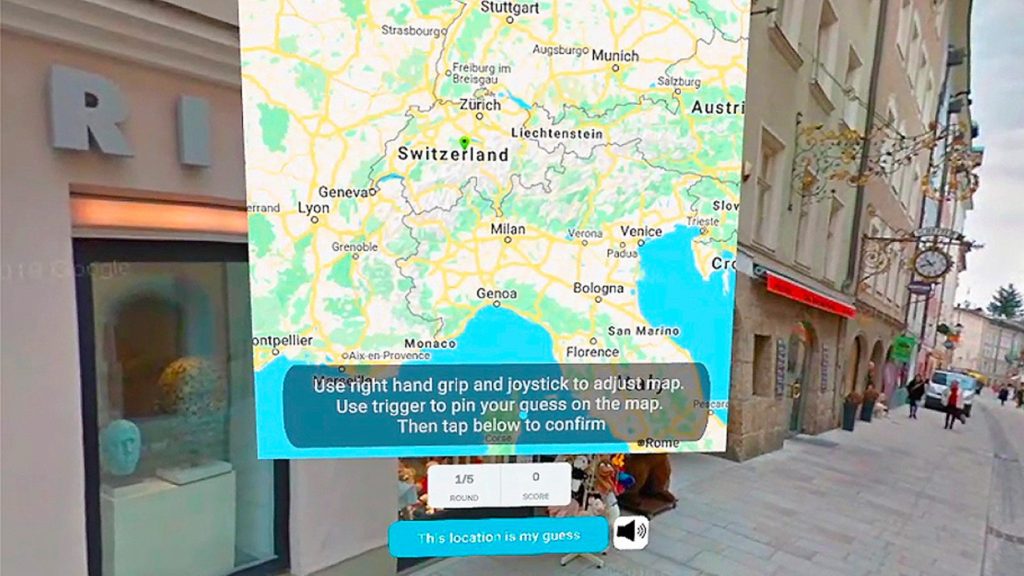From DSC:
Seeing the functionality in Freehand — it makes me once again think that we need to use more tools where faculty/staff/students can collaborate with each other REGARDLESS of where they’re coming in to partake in a learning experience (i.e., remotely or physically/locally). This is also true for trainers and employees, teachers and students, as well as in virtual tutoring types of situations. We need tools that offer functionalities that go beyond screen sharing in order to collaborate, design, present, discuss, and create things. (more…)
WayRay’s AR Car Display Could Change Driving Forever — from vrscout.com by Kyle Melnick
How One Hospital Is Using An AR Bear To Calm Young Patients — from vrscout.com by Kyle Melnick
Excerpt:
Children’s Health of Orange County (CHOCK), a children’s hospital located in Orange County, California, has transformed its lovable mascot ‘Choco’ into an AR (augmented reality) experience that walks children through the steps of a standard MRI scan. The idea is that by familiarizing younger patients with the process, they’ll feel more comfortable during the actual procedure.
Arizona State Launching New VR/AR Classes, Nonny De La Peña To Helm — by Darragh Dandurand
Excerpt:
The Center for Narrative and Emerging Media (NEM) will be housed in Downtown Los Angeles in the Herald Examiner Building, newly renovated to welcome faculty, staff, and students. NEM’s goal is to teach and support students, from reporters to artists to entrepreneurs and engineers, who are pursuing careers across the burgeoning creative technology sector.
Why Meta decided against an open VR app store — from protocol.com by Janko Roettgers and Nick Statt
TurnSignl wins ABA Techshow 2022’s Startup Alley competition — from abajournal.com
Excerpt:
TurnSignl, an app that helps drivers record roadside interactions with law enforcement and immediately access lawyers via videoconferencing, won the Startup Alley pitch competition at the ABA Techshow 2022 on Wednesday evening.
“Our mission is simple and three pronged: It’s to protect drivers’ civil rights, to de-escalate roadside interactions and third, and most importantly, ensure every driver and law enforcement officer returns home safe at the end of the day,” said Jazz Hampton, the CEO and general counsel at TurnSignl.
The innovation imperative: Lessons from high-growth companies — from deloitte.com by Khalid Kark, Tim Smith, Lou DiLorenzo Jr, and Mike Bechtel
Successful innovation functions display unique characteristics, one of them being technology’s prominent role in driving these initiatives. How can CIOs and technology leaders seize this opportunity and ensure they play a pivotal role in their company’s growth?
Excerpt:
Many enterprises now have an innovation function, whether it be a team that is dedicated to seeking out new opportunities or an executive tasked with finding new ways of working. But according to the latest Deloitte survey, only half of innovation efforts are achieving their desired value, and companies with successful innovation functions have unique characteristics. The study revealed that most leading companies view innovation as something both new—which can include new applications of existing tools—and improved—which may mean simply a measurable advance over legacy alternatives. This covers everything from incremental gains to moonshots.
Also see Deloitte’s Ten Types of Innovations.
Forbes Blockchain 50 2022 — from forbes.com; edited by Michael del Castillo and Matt Schifrin; reported by Maria Abreu, Nina Bambysheva, Justin Birnbaum, Lauren Debter, Michael del Castillo, Steven Ehrlich, Chris Helman, Katie Jennings, Jeff Kauflin, Javier Paz, Jon Ponciano, Marie Schulte-Bockum
Cryptocurrencies hog the spotlight, but blockchain’s biggest innovations are below the surface, saving billions each year for the world’s largest companies.
Excerpt:
You’ve come a long way, blockchain! Since our inaugural roundup of the Blockchain 50, published in 2019, the billion-dollar companies (minimum, by sales or market value) on our annual list have moved beyond test projects and now rely on “distributed ledger” technology to do serious work. A lot of the action is in the back office, verifying insurance claims or facilitating real estate deals. It has also become vital to supply chains, whether checking the provenance of conflict minerals like cobalt or tracking auto parts for Renault. Nearly half of the Blockchain 50 are based outside the United States; 14% are Chinese. New this year: venture capital firms, which as a group invested more than $32 billion in the sector in 2021.













